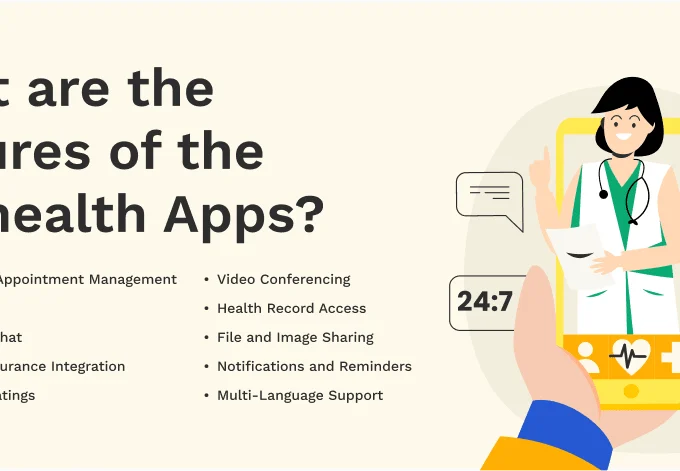Despite significant advances in medical technology, health outcomes remain deeply unequal. For millions of people, factors like income, race, geography, and education influence healthcare delivery. As tools like Artificial Intelligence (AI) and wearable devices begin to transform the way healthcare is accessed and managed, a key question emerges about whether these technologies will expand access and narrow the health equity gap or reinforce the divisions already built into the system. Joe Kiani, founder of Masimo and Willow Laboratories, has emphasized that the future of healthcare access will be shaped not just by what technology can do but by how it is built and used.
His latest innovation, Nutu™, reflects a deliberate effort to make personalized digital health support more accessible to those long underserved by the traditional model. Designed to meet people in their daily lives and support small, achievable changes, the platform brings equity into focus not as a feature but as a foundation. In a time of rapid advancement, ensuring that no one is left behind is both a moral imperative and a measure of meaningful progress.
Defining Health Equity in a Digital World
Health equity means that everyone has a fair and just opportunity to achieve their highest level of health. Achieving this requires addressing systemic barriers such as poverty, discrimination, and limited access to education, employment, and healthcare.
In the context of digital health, equity means designing technologies that work for all users, not just those who are tech-savvy, affluent, or living in urban centers. It also means ensuring that the data these technologies generate isn’t used in ways that reinforce bias or widen disparities.
As AI and wearables become more common, the challenge is ensuring that they do not replicate the inequities of the healthcare systems they are intended to improve.
The Promise and Pitfalls of AI in Healthcare
AI has the potential to revolutionize care by identifying patterns, predicting outcomes, and personalizing treatments. Algorithms can analyze vast datasets to flag risk factors for chronic conditions like diabetes or cardiovascular disease long before symptoms appear.
But AI is only as unbiased as the data it is trained on. If the underlying data reflects historical disparities, for example, if it underrepresents certain racial or socioeconomic groups, then the AI may produce skewed results. It can lead to inaccurate diagnoses, inappropriate recommendations, or gaps in care for the very populations that most people need to support.
Building equitable AI systems requires careful oversight, diverse data sets, and transparency. Companies must be accountable for how algorithms are built, evaluated, and implemented. Digital health platforms can lead by example in this area.
Wearables: Opportunity or Obstacle?
Wearable devices, from smartwatches to continuous glucose monitors, offer real-time health tracking that can inform and improve daily decision-making. They allow users to monitor heart rate, sleep, activity levels, and more, empowering them with insights that can prompt healthier behaviors.
However, access to wearables is still largely tied to income. Devices can be expensive, and many insurance plans do not cover them. Additionally, digital literacy and connectivity remain barriers for low-income and rural populations.
Wearables must be made more accessible and affordable to support equity. It includes creating low-cost alternatives, subsidizing devices for underserved populations, and integrating them into public health programs.
Community-Based Integration
Equity cannot be achieved through technology alone. It requires integrating digital tools into the broader fabric of community care. It means ensuring that health platforms relate to local clinics, support groups, and social services.
Nutu supports community-based health efforts by reinforcing small and sustainable shifts in daily behavior that align with the work of health professionals already embedded in local communities. The platform complements these human relationships by offering timely, personalized guidance that enhances care. Its greatest impact comes when paired with the trust, empathy, and consistency that community health teams bring to the people they serve.
Joe Kiani, Masimo founder, shares, “What’s unique about Nutu is that it’s meant to create minor changes that will lead to sustainable, lifelong positive results. I’ve seen so many people start on medication, start on fad diets… and people don’t stick with those because it’s not their habits.”
Understanding that healthy behaviors must fit into the realities of daily life is essential when working with underserved communities. Solutions need to be adaptable, culturally relevant, and rooted in empathy.
The Importance of Representation in Design
Creating equitable health tech also depends on who participates in development. Inclusive design starts with involving people from diverse backgrounds at every stage, from concept to testing to implementation.
It includes not only race and income diversity but also diversity in age, ability, language, and geographic location. When products are built with a broader range of users in mind, they are more likely to succeed across populations.
Policy and Privacy Protections
To support health equity, governments and regulatory bodies must establish policies that protect data privacy, promote access, and prevent discrimination.
As wearables and AI systems collect sensitive health information, safeguarding this data becomes paramount. Users from marginalized groups may be especially vulnerable to misuse or exploitation. Transparency, consent, and control over personal data are not optional; they are fundamental to ethical digital health.
Funding and reimbursement models must be updated to support preventive and tech-enabled care. Insurance coverage should include digital tools and wearables, especially when used to support chronic disease management and behavioral change.
Equity in Action: A Vision for the Future
When designed with care and intention, AI and wearable technologies can become meaningful tools for closing health gaps. Imagine a world where a person in a rural community receives the same quality of support and insight as someone in an urban center. Language, disability, or income no longer determine access to essential care. Real-time feedback helps a single parent manage stress before it affects long-term health.
This future is within reach. It depends on thoughtful design, inclusive development, and collaboration across sectors. The aim is not just better technology. It is better outcomes delivered through health solutions that reflect the needs of all people.
The Path Forward
To ensure AI and wearables support health equity, the focus must remain on accessibility, accountability, and collaboration. It’s not enough to develop advanced tools. They must be designed to reach and serve the people who have been historically left out of traditional care models.
Leaders in digital health are showing how innovation and inclusion can move forward together. When equity is built into the foundation of new tools, it becomes possible to rethink not only how we treat disease but how we prevent it in the first place.
The opportunity now is to close the gap, not widen it. As AI and wearable technologies become part of everyday care, their true value will be measured by whether they support better outcomes for everyone, regardless of background.












Leave a comment